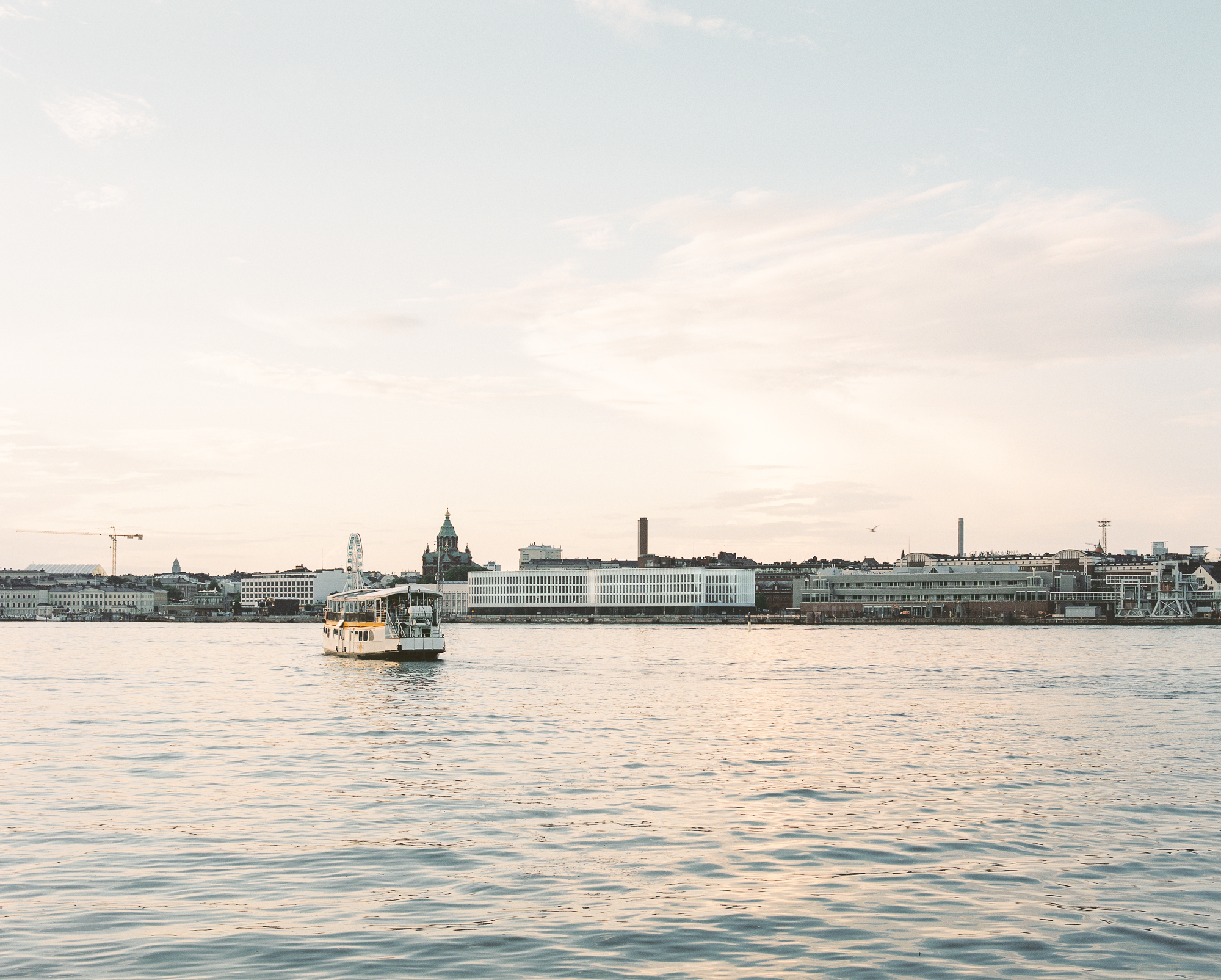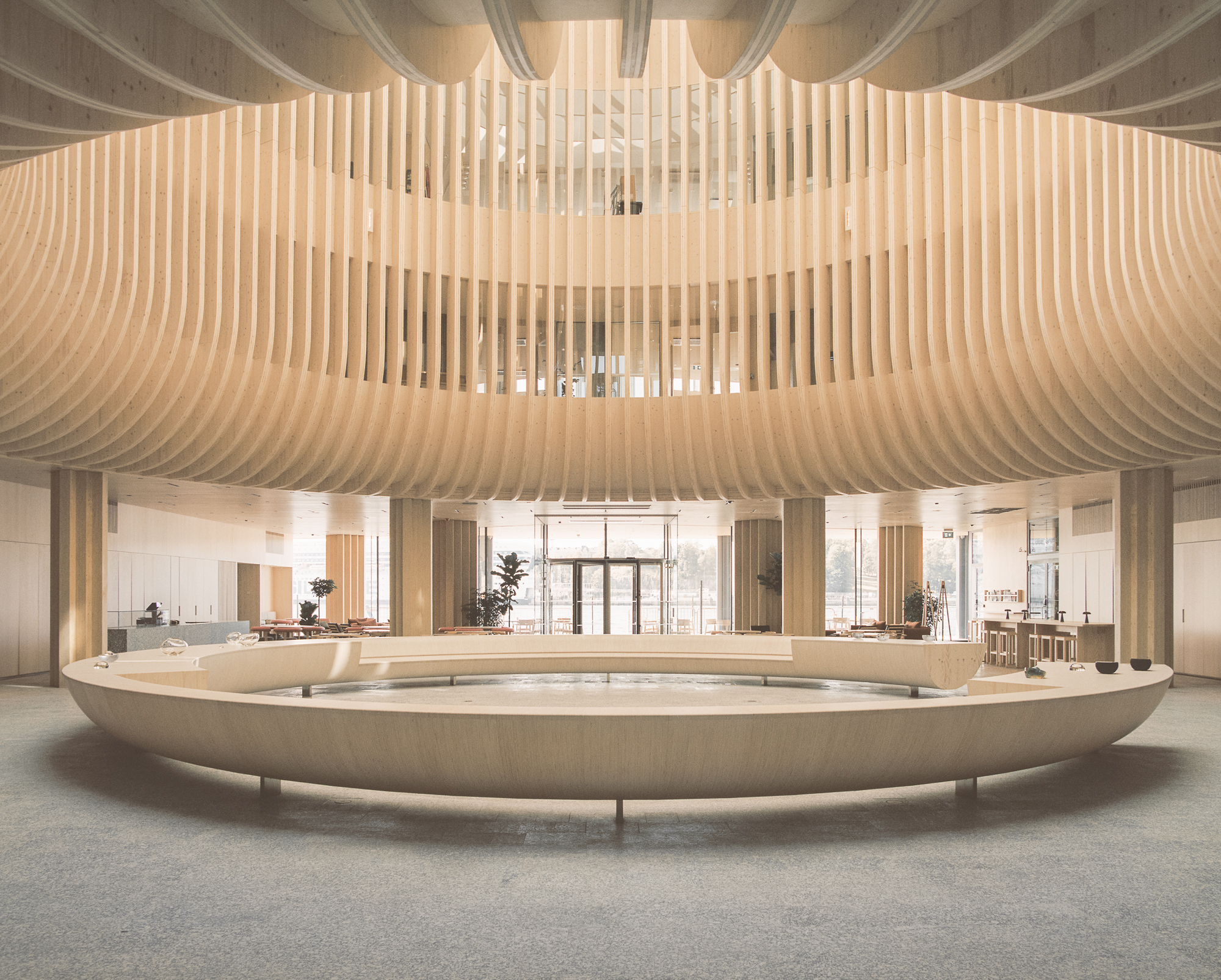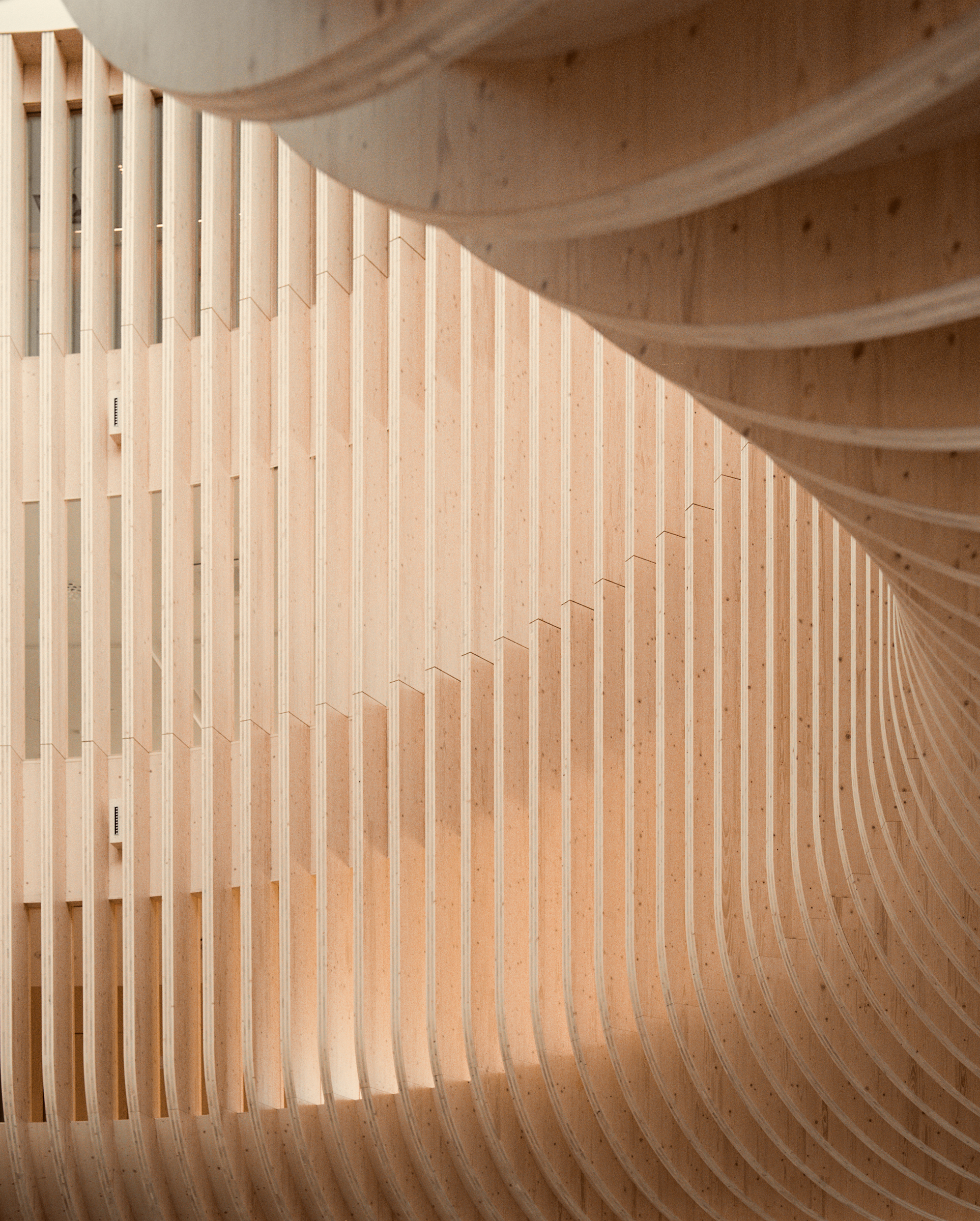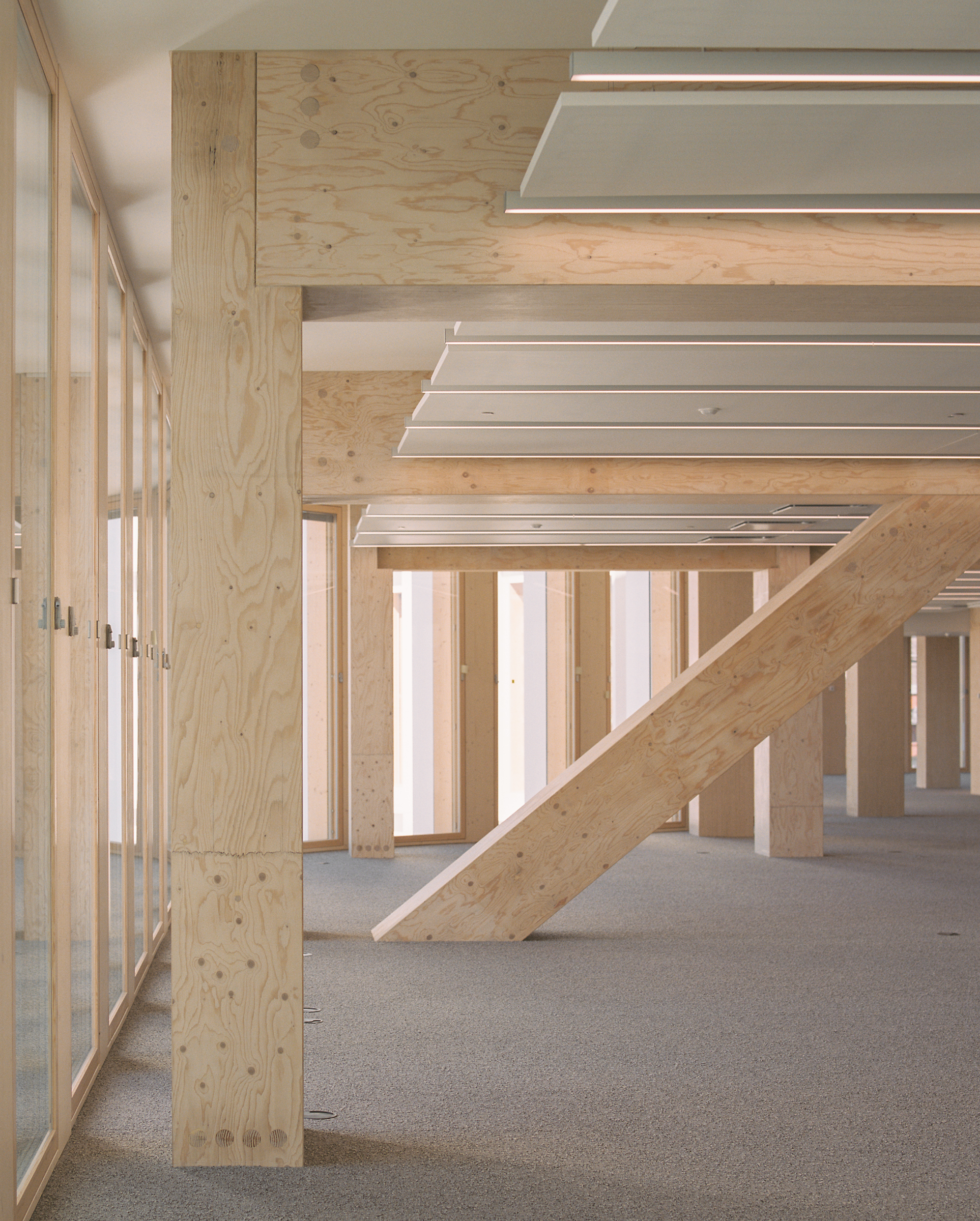
It is only fitting that Katajanokan Laituri, the headquarters of the Finnish forestry company Stora Enso, should be housed in a building largely made from wood. Created by local practice Anttinen Oiva, this is not just an exercise in sustainable architecture and the pioneering and progressive use of wood in urban large-scale architecture; but it also heralds an exciting new chapter in Helsinki’s Kauppatori Market district. Selina Anttinen, partner at Anttinen Oiva, explains: ‘The goal has been to create a calm presence in the historic milieu, but at the same time to provide an interesting new environment for city dwellers.’

The case of Katajanokan Laituri
Finns have led the way in recent decades with timber construction thanks in no small part to the Nordic nation’s abundance of trees and, as a consequence, its highly developed forestry industry. A core part of Finnish identity is rooted in the Finns’ symbiotic relationship with nature, and this has galvanized architects, developers and planners to embrace timber construction as a cornerstone of the country’s ambition to achieve carbon neutrality.

Impressively, the four-storey Katajanokan Laituri is constructed from around 7,500 cubic metres of wood, comprising almost 3,000 wooden elements. The visible structure is made from Finnish and Swedish timber, combining cross-laminated timber and laminated veneer lumber. While the building’s outer façade is made from glass, metal and stone, the interior skin is predominantly wood. ‘A double-skin was the best solution in an architecturally and technically challenging maritime context,’ explains Anttinen. ‘The outer protective layer integrates with its stone-built surroundings and is made of glass with vertical white metal lamellas and natural stone. The building’s appearance transforms in different times of the day and lighting conditions, and fits the various scales and motifs of the surrounding buildings from the different historical eras.’

Not just a feat of sensitive urban integration and development, and beyond its impressive wooden construction credentials, Katajanokan Laituri is a strikingly beautiful project. There’s no doubt that the predominance of wood makes for a building with greater sensory engagement. It doesn’t just look good, it smells good and feels good too. Inside there is a soaring, circular cathedral-like hall with a round skylight bringing daylight into the heart of the space, landing on a large, circular wooden bench. In a narrow inner courtyard, homage has been paid to the building’s organic matter with the addition of a fresh birch grove.

‘We have a long tradition of wooden construction in Finland, but larger-scale examples in urban environments are still few,’ Anttinen says. ‘In Katajanokan Laituri, we had a possibility to work in a demanding context with clients, partners and builders that understood, supported and pushed forward not only our design vision, but also our common goals to research and test the new type of large-scale wooden constructions.’ Facing the sea and acknowledging the rise in sea levels forecast in our future, the building also acts as a flood barrier.
Alongside Stora Enso’s headquarters, Katajonakan Laituri also houses the 164-room Katajanokka Pier 4 Hotel, together with restaurant and office facilities. Nestled within the historic centre of the Finnish capital fronting the sea, the building will soon be joined by the visitor pavilion for the Helsinki Biennial and in years to come the New Architecture and Design Museum, forging an integrated cultural, commercial and tourism hub in one of the city’s most picturesque areas. Says Anttinen of the project’s particular context: ‘With the old headquarters of Stora Enso by Alvar Aalto next door, and the iconic buildings of Helsinki’s historical centre by Carl Ludwig Engel nearby, the new building is now part of Helsinki’s maritime skyline.’







